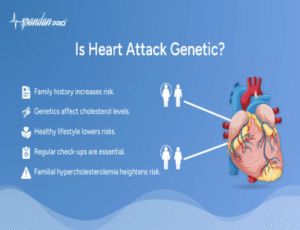The Silent Struggle: Living with Sjögren’s Syndrome and Autoimmune Diseases
Autoimmune diseases are often referred to as "invisible illnesses"—chronic conditions where the body’s immune system mistakenly attacks its own tissues. Among the wide array of autoimmune disorders, Sjögren’s syndrome stands out for its complexity, unpredictability, and the way it quietly erodes quality of life. Despite affecting millions worldwide, Sjögren’s remains underrecognized and frequently misunderstood, even by healthcare professionals. For those living with it, the path to diagnosis and treatment can be frustrating, exhausting, and deeply isolating.
What Is Sjögren’s Syndrome?
Sjögren’s syndrome is an autoimmune disease primarily known for causing dryness—especially dry eyes and dry mouth—due to the immune system targeting moisture-producing glands. However, its impact can be far more extensive. It can affect joints, lungs, kidneys, blood vessels, nerves, and digestive organs. Many people also experience overwhelming fatigue, chronic pain, and cognitive dysfunction (often called “brain fog”). In some cases, Sjögren’s coexists with other autoimmune disorders such as lupus, rheumatoid arthritis, or scleroderma, making it even harder to diagnose and manage.
The Challenge of Diagnosis
One of the most frustrating aspects of Sjögren’s—and many autoimmune diseases—is how long it often takes to get a diagnosis. The symptoms are often vague, intermittent, and overlap with those of other conditions. A person might visit multiple specialists—rheumatologists, ophthalmologists, neurologists—before someone connects the dots. On average, it takes about 3 to 5 years to receive a proper diagnosis of Sjögren’s syndrome, during which many patients are dismissed, misdiagnosed, or told their symptoms are psychological.
Blood tests can detect antibodies like SSA and SSB, which are commonly associated with Sjögren’s, but not all patients test positive. As a result, even testing isn’t always conclusive. Often, a combination of clinical symptoms, lab work, and sometimes a minor salivary gland biopsy is needed to confirm the diagnosis.
Living with Sjögren’s: More Than Dry Eyes
The common perception of Sjögren’s as “just dry eyes and mouth” grossly underestimates its impact. For many, the dryness is debilitating—imagine not producing enough saliva to swallow food comfortably, or eyes so dry they feel like sandpaper. But the real difficulty lies in the systemic nature of the disease.
Fatigue is one of the most common and disabling symptoms. It's not just feeling tired; it's a profound, bone-deep exhaustion that doesn’t improve with rest. Joint and muscle pain are also frequent complaints, and some people develop neuropathies that cause numbness or burning sensations. In rare cases, complications can be life-threatening, such as interstitial lung disease or lymphoma, which is more common in people with Sjögren’s.
On top of the physical symptoms, many patients deal with anxiety and depression—not just because of the disease itself, but because of the chronic nature of their symptoms, the lack of understanding from others, and the ongoing uncertainty about how the disease will progress.
The Psychological Toll
Living with an invisible illness like Sjögren’s means constantly negotiating with your own body. There’s the daily unpredictability—some days you feel functional, other days it’s hard to get out of bed. There’s also the pressure to “look fine” and carry on with work and social obligations, even when you're far from okay.
This disconnects between appearance and reality can lead to feelings of isolation. Friends and family may not understand the severity of the disease, especially when the symptoms aren’t outwardly visible. This lack of awareness can be invalidating and contribute to a sense of loneliness that’s common among autoimmune disease patients.
Navigating Treatment
There is no cure for Sjögren’s syndrome. Treatment focuses on managing symptoms and preventing complications. Eye drops, saliva stimulants, and immunosuppressive drugs can help, but they often come with side effects and don’t always provide relief. Patients must also make lifestyle changes—managing stress, getting adequate rest, and avoiding triggers—to maintain stability.
What’s especially difficult is the trial-and-error nature of treatment. What works for one person may not work for another. Patients often become their own advocates, researching, tracking symptoms, and pushing for the care they need.
The Need for Awareness
Greater awareness and education about Sjögren’s syndrome and autoimmune diseases are crucial. Medical professionals need better tools and training to recognize these conditions early. Friends, families, and employers need to understand that these illnesses are serious—even if they aren’t visible. And patients need more support: through research funding, access to specialists, and community networks.
Living with an autoimmune disease like Sjögren’s is a daily act of resilience. Behind the dry eyes and tired smiles are people fighting battles most will never see. The more we understand, the better we can support those living with these invisible, but very real, challenges.
Photo by Ivan Aleksic on Unsplash













